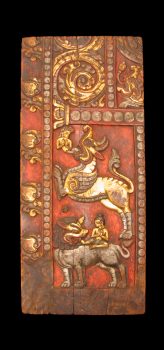Tibet
14th century


Tibet
14th century


Buddhism teaches that all life is sacred and should be respected, as all sentient beings have the potential to attain enlightenment. This notion encourages a positive view and compassion for others.
Today, Tibetans primarily inhabit the Tibetan Plateau, situated between the Himalayan mountain range and the Indian subcontinent to the west, Chinese cultural regions to the east, and Mongolian cultural regions to the northeast. During the 7th to 9th century, Tibetan rulers expanded their empire across Central Asia, and established Buddhism as the state religion.
Get the latest news and stories from the Rubin, plus occasional information on how to support our work.